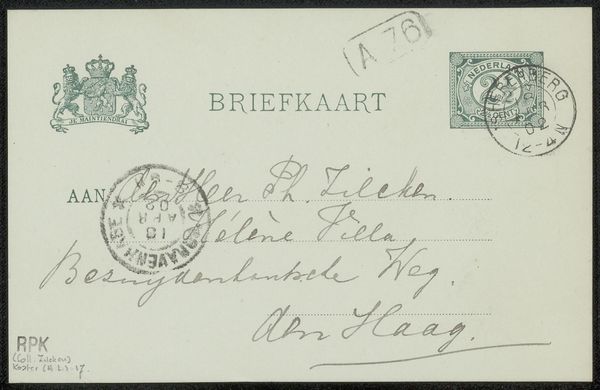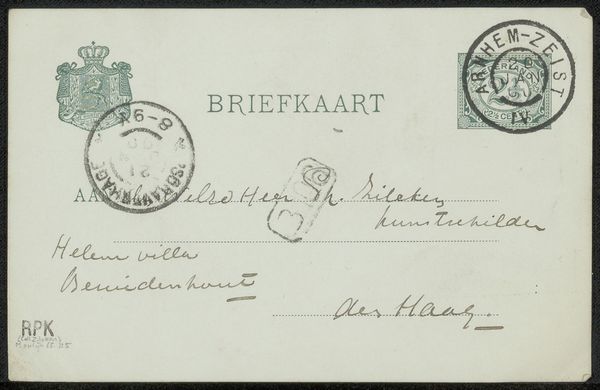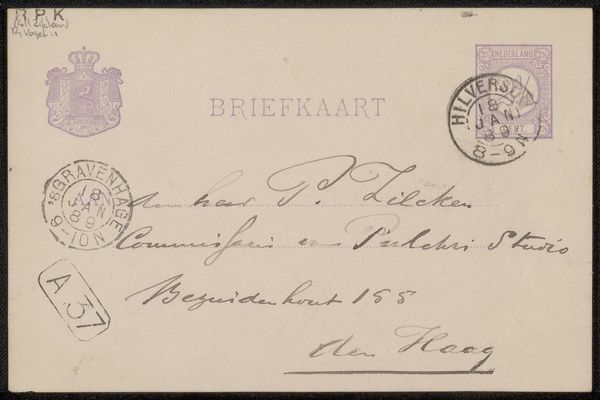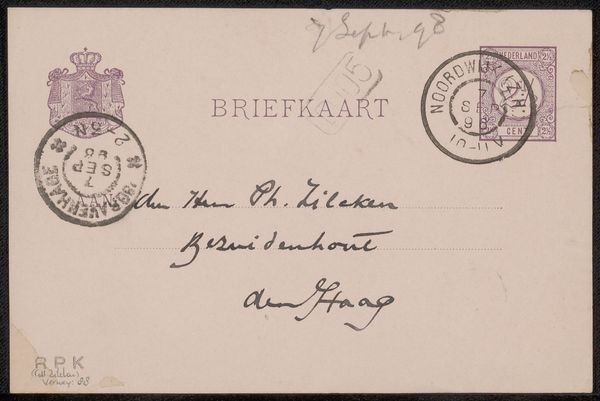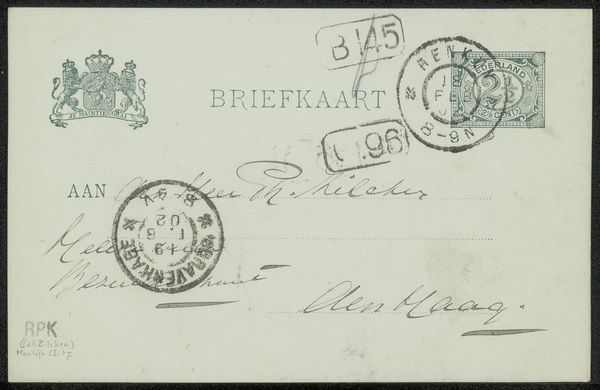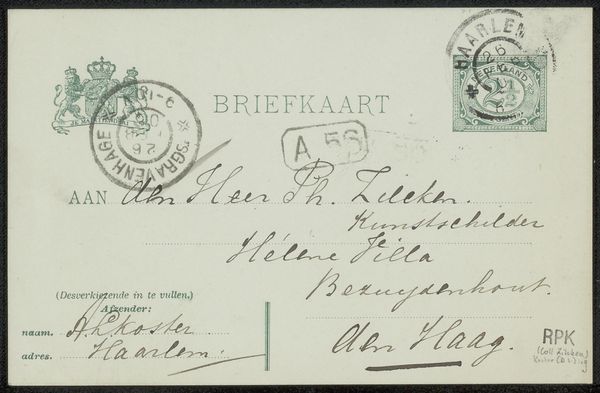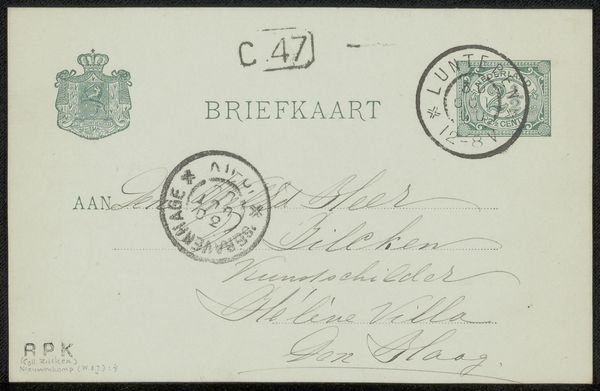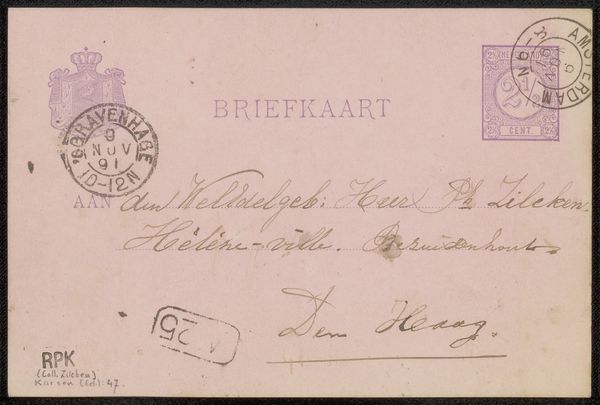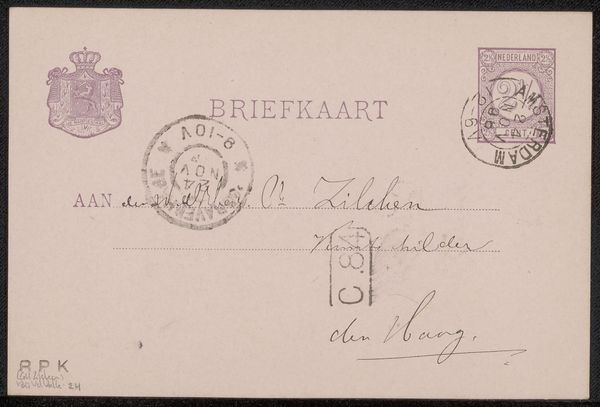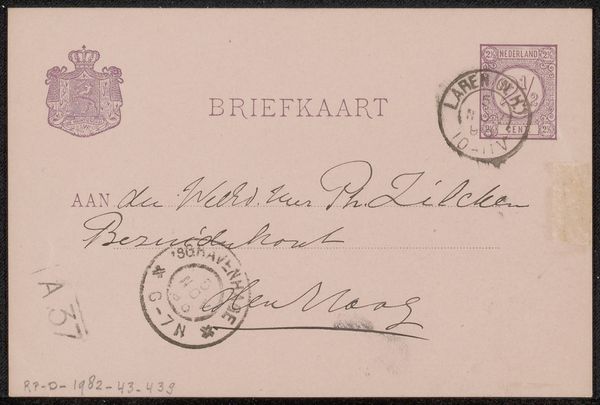
drawing, print, paper, ink, pen
#
drawing
#
hand-lettering
#
dutch-golden-age
# print
#
old engraving style
#
hand drawn type
#
hand lettering
#
paper
#
personal sketchbook
#
ink
#
hand-drawn typeface
#
pen-ink sketch
#
pen work
#
sketchbook drawing
#
pen
#
post-impressionism
#
sketchbook art
Copyright: Rijks Museum: Open Domain
Editor: Here we have Heinrich M. Krabbé’s "Briefkaart aan Philip Zilcken," likely from 1905, created with pen, ink, and paper. It's simply the back of a postcard, really, with a handwritten address. What strikes me most is how ordinary it seems. What can we really learn from something like this? Curator: Ordinary objects often reveal the most, precisely because they were not meant to be monumental. Consider the social context of letter writing in the early 20th century. Who had the privilege of correspondence? How does the act of sending a brief note intersect with class, literacy, and even the shaping of public opinion at that time? Editor: So you're saying that even something as mundane as a postcard address tells us something bigger about society? Curator: Absolutely. The handwritten text, the stamps, the very format of a “briefkaart”—all speak to a specific historical moment. Moreover, think about Krabbé directing this to Zilcken. What sort of relationship did these individuals have? It looks as though Zilcken might be an artist or perhaps involved in arts and culture himself. What social and professional circles are touched by the path of this one message? It speaks of intellectual life at that time. Does this change how we perceive the ‘ordinariness’ you describe? Editor: I guess I was thinking of it as just an envelope, but it is a glimpse into someone's real, everyday life. I hadn’t really thought of it as an object imbued with traces of connection and perhaps privilege. Curator: Exactly! It prompts us to consider whose stories are often missing from the dominant narratives of art history and how everyday items can act as silent witnesses to those lives. Editor: That's a really interesting point. I’ll definitely think about artworks differently from now on, searching beyond the obvious narratives. Curator: Indeed. Artworks of all kinds can provide access to social and historical contexts. Even what might appear as a fleeting trace, such as an old envelope, has cultural significance.
Comments
No comments
Be the first to comment and join the conversation on the ultimate creative platform.
